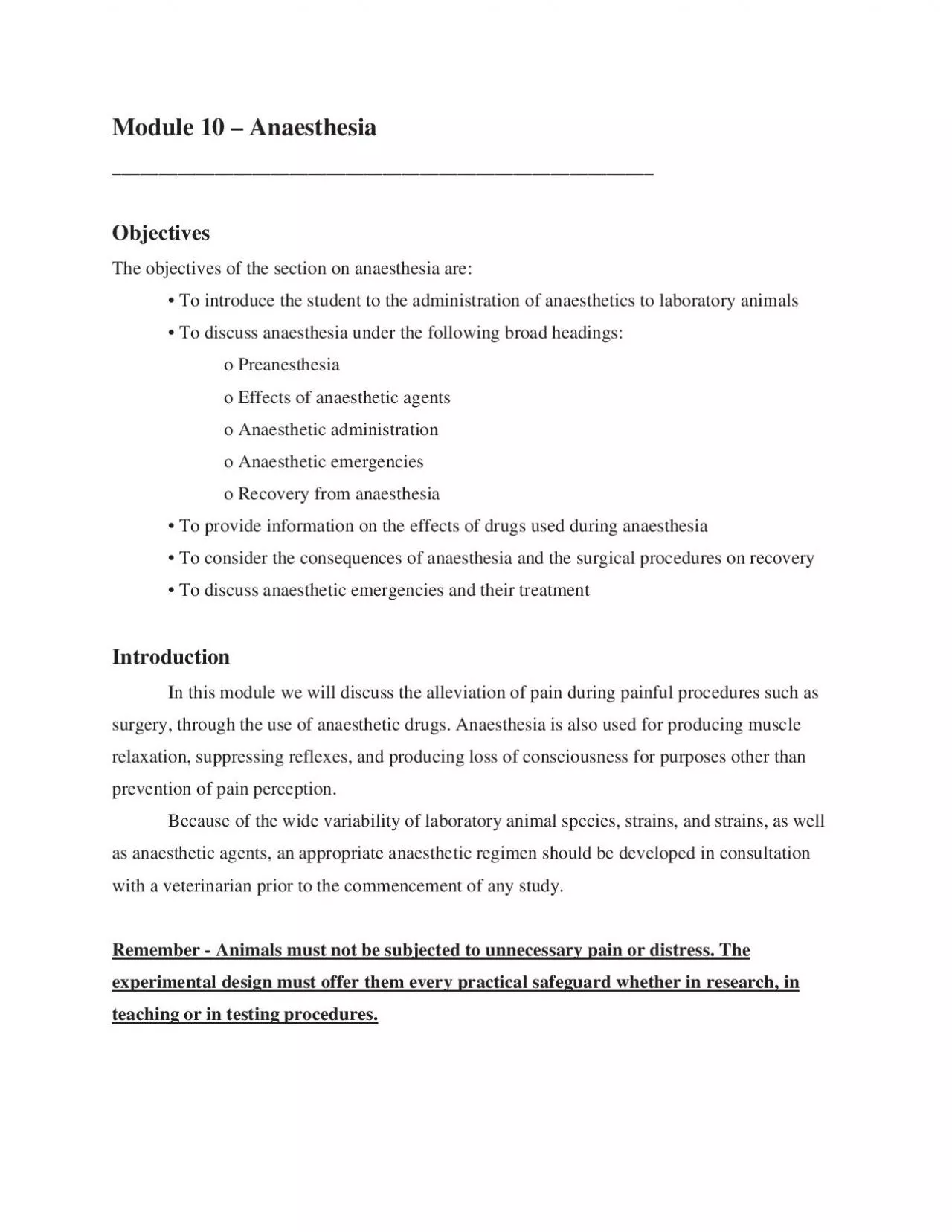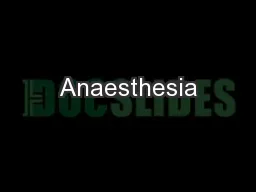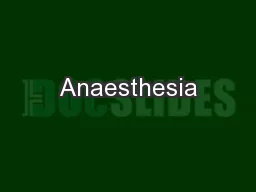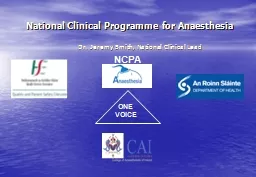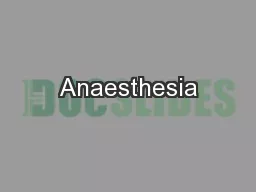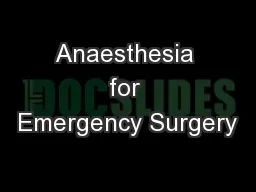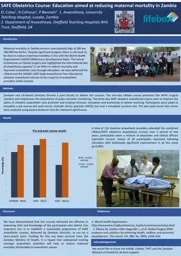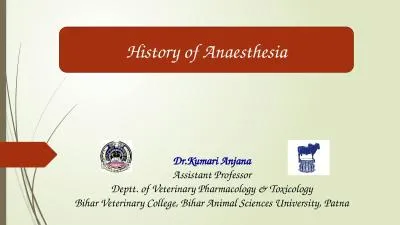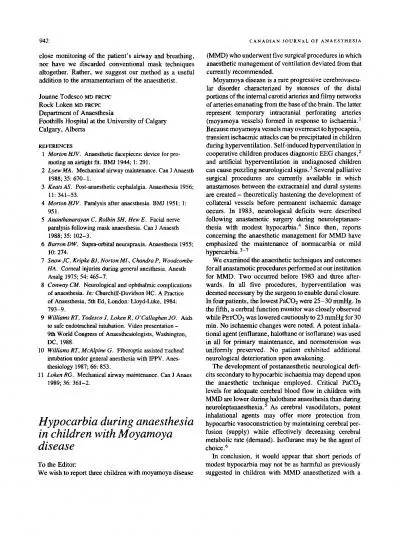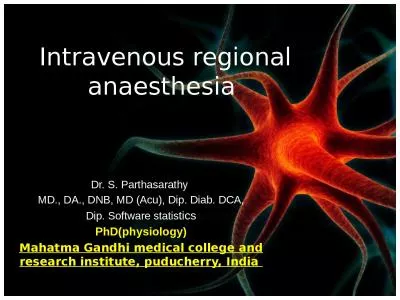PDF-The objectives of the section on anaesthesia are To introduce the
Author : hazel | Published Date : 2022-10-11
experimental design must offer them every practical safeguard whether in research in teaching or in testing procedures The need to use an anaesthetic to perform
Presentation Embed Code
Download Presentation
Download Presentation The PPT/PDF document "The objectives of the section on anaesth..." is the property of its rightful owner. Permission is granted to download and print the materials on this website for personal, non-commercial use only, and to display it on your personal computer provided you do not modify the materials and that you retain all copyright notices contained in the materials. By downloading content from our website, you accept the terms of this agreement.
The objectives of the section on anaesthesia are To introduce the: Transcript
Download Rules Of Document
"The objectives of the section on anaesthesia are To introduce the"The content belongs to its owner. You may download and print it for personal use, without modification, and keep all copyright notices. By downloading, you agree to these terms.
Related Documents

